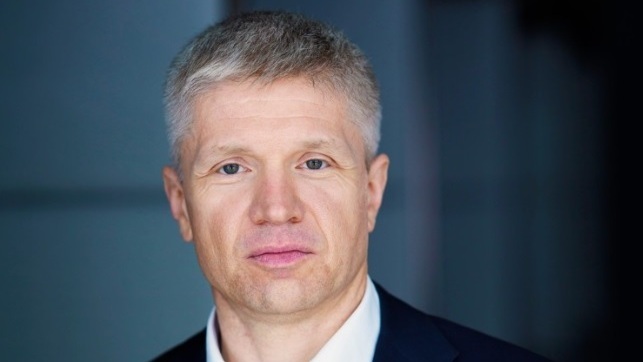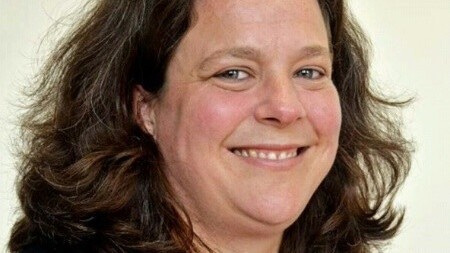
NZAOA chair Günther Thallinger: asset owners do not acknowledge ‘existential threat’
The chair of the Net-Zero Asset Owner Alliance warns that many asset owners may fall victim to adverse climate impacts, with insurers already suffering
Günther Thallinger, the chair of the Net-Zero Asset Owner Alliance (NZAOA), is calling for bold action when it comes to asset owners’ net zero efforts, primarily to protect the best interests of their stakeholders.
Making sure asset owners' portfolios are indeed aligned with net zero across all asset classes and all markets is no simple feat, the Allianz board member stated as he singled out the measurement of companies’ scope 3 data, calling it "sparse and unreliable."
Key to this process is collaboration, according to to the industry veteran, as asset owners’ "fiduciary duty" requires them to consider, evaluate, and make decisions based on what supports the best interests of their stakeholders.
"This is an individual responsibility since each asset owner represents different assets and that which is in the best interests of those asset is as varied as the assets themselves," Thallinger said, as he speaks for the member-led initiative of 86 institutional investors, with over $11 trillion in assets under management, which has committed to transitioning their investment portfolios to net zero greenhouse gas emissions by 2050.
"Given asset owner specificities, what could be gained from working collaboratively? A fair question, yet one that overlooks the complexity of systemic risks, such as those posed by climate change."
His comments come as, just in the first half of this year, parts of South Asia, particularly India, experienced some of the most intense heatwaves in history while the world’s ocean surface hit an all-time high at 21.1C.
Moreover, scientists recently predicted a 66% likelihood that the world will exceed the annual average of 1.5C of warming in the next five years.
"For long-term institutional investors, these adverse climate impacts pose an existential threat," Thallinger stressed.
"In fact, the insurance industry is already facing material consequences with actors withdrawing from areas with high catastrophe exposure."
For example, multiple insurers recently withdrew from the Californian home insurance market leaving some homeowners without coverage.
"For long-term institutional investors, adverse climate impacts pose an existential threat."
"To exercise their freedom to invest responsibly, asset owners need to have the data, the tools, and the methodologies to properly assess climate risk and to integrate it into their individual investment decision-making," Thallinger said.
"Adding climate considerations into every part of an asset owner’s business is not always straightforward, but it is essential for what the Net-Zero Asset Owner Alliance sees as ‘the basics of decision-making’," he explained.
Also read
PRI chief David Atkin: ‘the race to net zero will be won or lost in Asia’
So, how can asset owners address climate risk to ensure they are continuing to act on their individual and unique fiduciary responsibilities?
"Well, to build the basics of decision-making and to then operationalise them means evaluating and reducing one’s own exposure to high-emitting assets, recognising the business case for investing in climate solutions, and engaging diverse stakeholders, since addressing climate risk requires systemic change that goes beyond portfolio-allocation strategies. Optimally delivering on this requires collaboration."
To protect investors' assets and to signal to the real economy that aligning with the Paris Agreement’s goal of limiting warming to 1.5°C is "the prudent way forward," an asset owner would first seek to reduce its exposure to high-emitting assets, Thallinger said.
Investee companies, managers and policymakers
As seen in the case of raised perceived risk for certain climate solution investments, the lack of an enabling policy environment limits real-economy transition and investor action, Thallinger pointed out.
UNEP’s 2022 Gap Emissions Report confirmed that both the current policies as well as the updated Paris Agreement nationally determined contributions stand insufficient to limit warming to 1.5°C.
"Thus, to contribute to tackling climate change systemically, an asset owner might consider adding a third layer to its efforts—policy engagement. Asset owners can leverage their influence through engagement with investee companies, asset managers, and policymakers."
However, a single asset owner "will surely find it challenging" to act effectively on all those fronts alone, he said.
"Contributing to an industry initiative offers one the possibility of extending its reach and impact."
He warned that "the devastating effects of climate change and the risk of imminent large-scale economic disruption that they pose have not been fully acknowledged by all stakeholders."
"However, this only highlights how well-positioned actors with long-term views, such as asset owners, in leading and pushing for a just net zero transition."
Thallinger concluded that "institutional investors understand the need to act immediately, effectively, and systemically. More and more are also realising that acting within an industry-led alliance greatly facilitates this."
"Ensuring that an asset owner’s portfolio is indeed aligned with net zero across all asset classes and all markets is no simple feat."
Expanding opportunities
With the inclusion of climate considerations into decision-making, low-carbon investments simply surface as better investments, Thallinger argued.
"However, individual asset owners may find that opportunities to invest in climate solutions aren’t as plentiful, because the current risk profiles of the most needed investments, development of low-carbon energy supply in emerging markets and developing economies, for example, remain challenging for institutional investors."
"In these cases, instruments that provide concessional capital, such as blended finance, could be used to adjust the risk profiles in target markets," he said.
Thallinger added that "an individual investor would rarely engage multilateral development banks and development finance institutions on mandate reform themselves, although the issue is crucial for scaling blended finance."
"Asset owners can and do use their voice to approach change-making institutions on issues that are crucial for ensuring an investable low-carbon universe for asset owners."
While an individual asset owner may want to contribute to development and scaling of climate change solutions, it may find itself hindered in doing so effectively if unable to affect change in the global financial architecture," Thallinger concluded.
Also read
How new laws are ramping up the push for renewables investment


